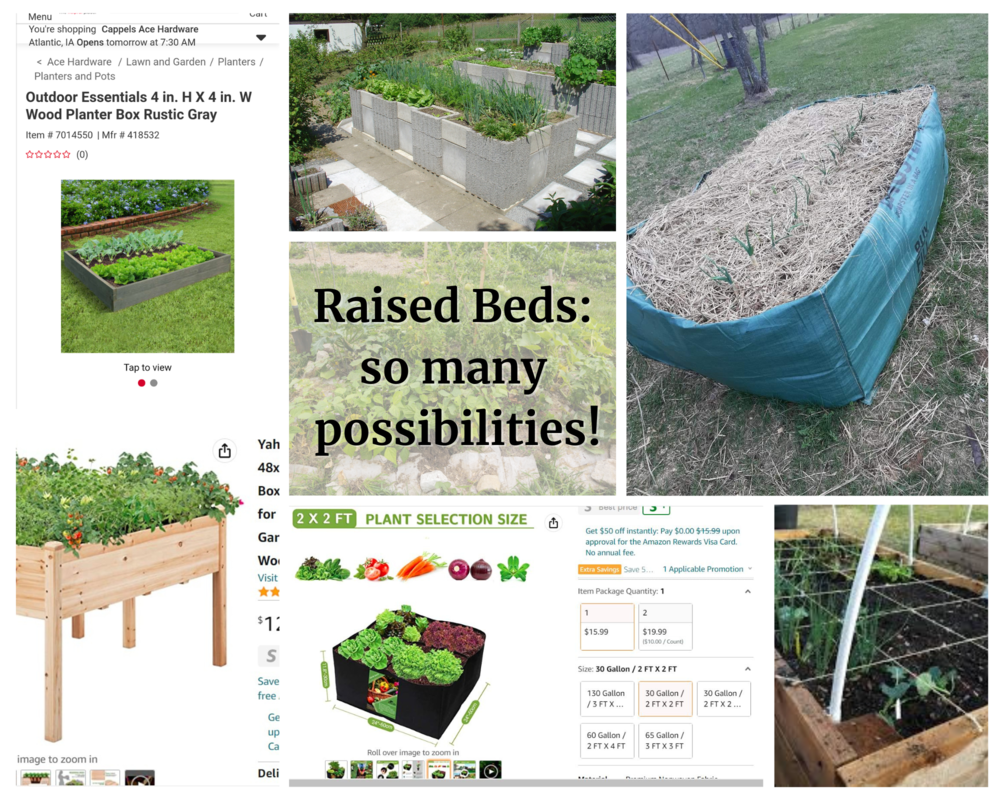Absolutely!
In fact, raised beds are great for growing veggies!
With Operation: Lawn to Lunch we try to make gardening as accessible as possible! In our ground prep video we detail how to take a 4x8 piece of your yard and turn it into a garden using a shovel and cardboard because this is a cheap and relatively easy way to create a garden. And most people have access to a shovel and cardboard. However, growing in a raised bed may be easier for many people. Recently, I have learned of some creative, reasonably priced ways to create a raised bed and I want to share those with you today!
Why grow in raised beds? Well, a raised bed can mean less bending over – and that’s reason enough all by itself ;) Also, with a raised bed you fill it with your choice of soil mix and raised beds tend to be less compacted, drain better and even warm up a bit earlier in the spring. Raised beds can also offer definition to your garden space, less weeds and just plain be pretty to look at!
You can spend as much or as little as you want to make a raised bed. You can make a raised bed yourself out of wood, metal sheets or cinder blocks. Or you can buy premade beds or raised bed kits! More recently, I have learned that you can buy fabric raised garden beds or you could even use a debris bag which can be found at home improvement stores like Lowe’s and Home Depot.
Things to keep in mind when building or buying a raised bed:
- Height: to decrease bending over and/or to be accessible to a wheelchair user, the recommended height is 30-33” from the ground to the top of the bed. However, your raised bed can be as little as 6-12 inches high and still be an effective growing space.
- The bed needs to be able to drain – if you use something with a solid bottom like a stock tank, you will need to drill holes in the bottom so excess water can drain out. *pro tip: if you are making or buying an elevated bed that sits on legs, you can line the bottom of the bed with landscaping fabric before filling it to allow water to drain while keeping the soil in place J
- Chemically treated or ‘green’ lumber can leach chemicals – we recommend untreated lumber even though it will have to be replaced more often OR Cedar as cedar is naturally rot resistant
- Soil in raised beds:
- When I fill my raised beds I like to use ½ soil and ½ compost. You can also add vermiculite or a bit of sand to help with drainage if your soil tends toward clay like ours does. I have found a good compost to be enough to equal out even our clay soil though.
- For a 8’x4’x12” raised bed, you will need 32 cu yards of soil/compost mix.
One more thing to consider when growing in a raised bed is that they may require more water than an ‘in-ground’ garden. This is especially true of raised beds that sit on legs or stilts.
After that, growing in a raised bed is very similar to growing in the ground!
Let's get growing!
Emily & Nathan
P.S. to learn more about Operation: Lawn to Lunch or to get signed up head over to our Lawn to Lunch information page!



 RSS Feed
RSS Feed